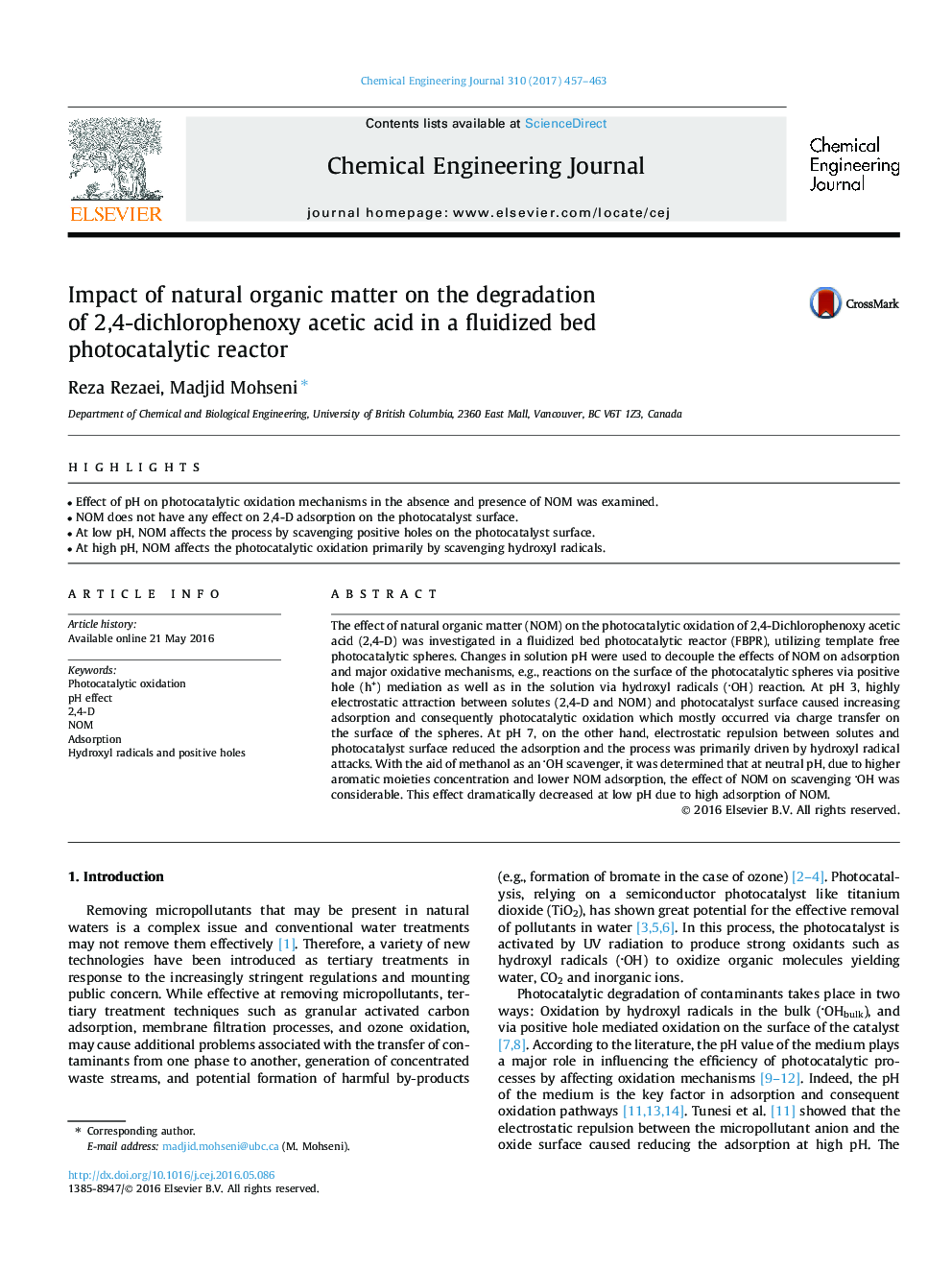| Article ID | Journal | Published Year | Pages | File Type |
|---|---|---|---|---|
| 6466753 | Chemical Engineering Journal | 2017 | 7 Pages |
â¢Effect of pH on photocatalytic oxidation mechanisms in the absence and presence of NOM was examined.â¢NOM does not have any effect on 2,4-D adsorption on the photocatalyst surface.â¢At low pH, NOM affects the process by scavenging positive holes on the photocatalyst surface.â¢At high pH, NOM affects the photocatalytic oxidation primarily by scavenging hydroxyl radicals.
The effect of natural organic matter (NOM) on the photocatalytic oxidation of 2,4-Dichlorophenoxy acetic acid (2,4-D) was investigated in a fluidized bed photocatalytic reactor (FBPR), utilizing template free photocatalytic spheres. Changes in solution pH were used to decouple the effects of NOM on adsorption and major oxidative mechanisms, e.g., reactions on the surface of the photocatalytic spheres via positive hole (h+) mediation as well as in the solution via hydroxyl radicals (OH) reaction. At pH 3, highly electrostatic attraction between solutes (2,4-D and NOM) and photocatalyst surface caused increasing adsorption and consequently photocatalytic oxidation which mostly occurred via charge transfer on the surface of the spheres. At pH 7, on the other hand, electrostatic repulsion between solutes and photocatalyst surface reduced the adsorption and the process was primarily driven by hydroxyl radical attacks. With the aid of methanol as an OH scavenger, it was determined that at neutral pH, due to higher aromatic moieties concentration and lower NOM adsorption, the effect of NOM on scavenging OH was considerable. This effect dramatically decreased at low pH due to high adsorption of NOM.
